Milestone: 1,000 Father Coleridge Reader subscribers
Who would have thought that in less than a year, 1,000 readers would sign up for the writings of a nineteenth century English Jesuit, Fr Henry James Coleridge SJ?
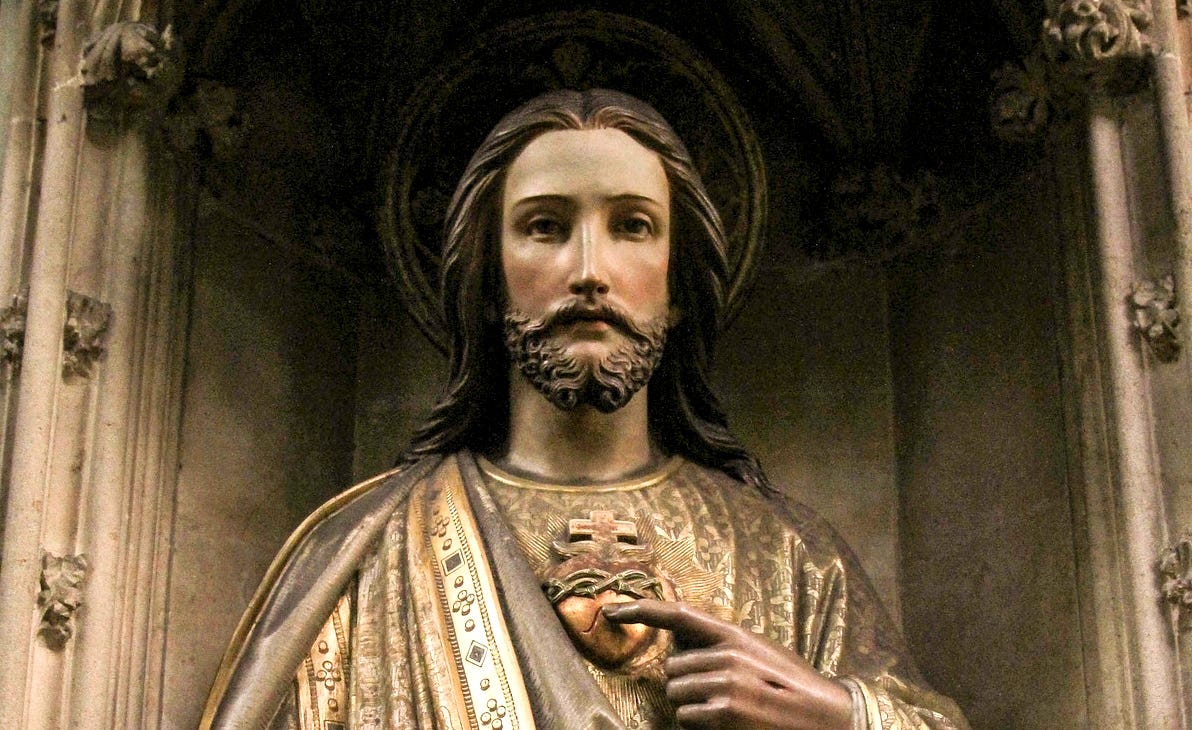
Who would have thought that 1,000 readers would sign up to a website based around the writings of the nineteenth century English Jesuit, Fr Henry James Coleridge SJ?
Milestone Reached
A few days ago, Father Coleridge Reader reached a new milestone – 1,000 email subscribers.
Who would have thought that 1,000 readers would sign up to a website based around the writings of a nineteenth century English Jesuit – in less than a year?
The fact that we’ve achieved this in less than a year of operation is mind-boggling.
And who would have thought our weekly traffic would grow like this:
There is a reason for these phenomena, however.
It’s because readers are finding in Coleridge that “something which was missing,” which they need to live as good Christians.
Familiarity with Christ
I first discovered Fr Henry James Coleridge SJ when I read an article by John Daly about a problem facing many Catholics – a lack of “familiarity with Our Lord Jesus Christ.”
Many Christians today pray, confess, study doctrine, and strive to live by the moral law. Yet even with all this, something feels absent – a dryness, a distance, a lack of real knowledge of Our Lord and love for him.
We know about him, and his Gospel – but we do not yet dwell with him, walk beside him, follow him step by step through his life on earth.
We are all aware of St Jerome’s famous maxim, that ignorance of the Scriptures is ignorance of Christ. Christ is, after all, the reason wanting to learn theology: and true theology is nothing more or less than his doctrine expressed in a systematic, scientific way. Frank Sheed expressed the same idea:
“We all respond to different elements in Christ, but we have to find them for ourselves. The student, like the teacher, should be soaked in the Gospels. He cannot meet our Lord anywhere else, not as He lived and moved and talked: that is where He is.”1
Daly makes the same point, saying that the Gospels “should be read again and again.” However, he adds that they can and should be “fleshed out by the perusal of more detailed works.” He writes:
“The personality of Our Lord can only become known to us through careful study of His words and deeds. When we truly know Christ, we cannot fail to admire and love Him, to be charmed by Him and to desire to follow Him. Our own values and characters will be transformed by Him to the extent that we pass our time in His divine company. Catholicism without familiarity with Jesus is but dry bones.
“As well may we try to learn to swim from a book without getting our feet wet as to try to practise seriously the religion founded by Christ to bring men to know and love Him without immersing ourselves in the records He has left us of Himself.”
The article went on to list seven authors whose works he recommended, including Fr Coleridge:
6. Fr. Henry James Coleridge S.J., The Life of Our Life, (twenty-six volumes).
Fr. Coleridge’s achievement leaves one gasping: a very complete life of Our Lord in twenty-six independent volumes, filled with information, with piety and with orthodoxy, answering every doubt, supplying every need, and doing so without concession to the wave of modernising scriptural interpretations which was already washing across Europe in the nineteenth century.
Yet the work’s renown seems to be inversely proportional to its merit – hardly anyone seems to have heard of it!
Daly’s description of Coleridge’s work is accurate.
Coleridge at The WM Review
Father Coleridge Reader is a project of The WM Review. We began publishing extracts from his works at there, usually to mark the liturgical seasons, feasts and saints’ days.
The WM Review focuses on explaining traditional points of theology, and using them to approach contemporary questions in the Church.
But its more fundamental purpose is to strengthen what remains – to help Catholics strengthen their faith in the darkest crisis of all time, and to give them what they need to remain Catholics, within the bosom and unity of the Church, outside of which there is no salvation.
The science of theology, and its application in apologetics and polemics are only part of this.
It’s well known that many well-meaning Catholics online can get bogged down in ideas and polemics, and can adopt a very narrow and hyper-specialised focus on contemporary issues.
Important as theology and polemics certainly are, they are not the whole story. They cannot be the whole story.
That’s why Father Coleridge’s texts were such an important part of The WM Review’s work.
And that’s why, inspired by the John-Henry Newman archive Newman Reader, I decided that the world needed a Father Coleridge Reader as well.
Father Coleridge Reader – what we do, and what we want to do
In each text Father Coleridge Reader publishes, Coleridge explains the context of the particular Gospel episode, and places it in the wider context of Christ’s life, the doctrine and history of the Church, the lives of saints – and all in a highly readable style.
At present, we are following the Gospels read in the liturgical cycle of the traditional Roman liturgy.
Here is how we have gone about this project in the first year:
Year 1 (thus far)
Provide Fr Coleridge’s commentary on the Gospel episode for each Sunday and major feast for the whole year
Begin filling up the archive of Coleridge’s life of Christ, Life of Our Life.
We split each section into parts, which we send before and after each Sunday. This allows readers to prepare for the coming Mass, and to continue reflecting on it afterwards.
But in order to achieve this, other tasks are necessary:
Curating and cleaning-up scanned chapters
Re-typesetting relevant chapters
Cataloguing chapters in file
Deciding where to split each chapter into suitably-sized parts for publication, such that each can be read as standalone pieces.
(While I had also hoped to record more podcast versions of the chapters, my living situation at present is not really suitable for this.)
Here’s what we have planned for Year 2 – and possibly Year 1, depending on time-constraints:
Year 2
Continue the task of curating, preparing and publishing Fr Coleridge’s texts, this Tome focusing on important saints’ days for the year
Fill out the liturgical year with texts that were too long to publish in Year 1
Begin typesetting extracts for a series of hard-copy books (E.G., Advent with Fr Coleridge)
Projecting even further ahead…
Year 3
Typeset and publish a “semi-secret” and unpublished work by Fr Coleridge
Work towards re-publishing new editions of Coleridge’s original works.
Maintain a regular newsletter of Coleridge’s material for the liturgical year
Continue filling out the liturgical year with texts that were too long to publish in Year 1 and 2
What’s the goal of all this?
To make Our Lord and Saviour Jesus Christ better known and loved…
… and to make Fr Henry James Coleridge SJ a household name amongst Catholics.
But while this work is a labour of love, it takes a lot of time.
That’s why we ask those who enjoy the work to consider joining the project as a monthly/annual subscriber.
Right now, we have just over 30 such subscribers.
We are extremely grateful to them, because it’s thanks to those 30 subscribers that we can justify continuing with this project for now, amidst all our other work.
If you’d like to help with this and join this project, then please consider signing up as a monthly/annual subscriber:
Alternatively, you can make a donation to The WM Review, which directly supports Father Coleridge Reader:
Who was Fr Henry James Coleridge SJ?
As mentioned, Coleridge was a nineteenth century English Jesuit priest. As a younger man, he had been a “disciple” of John-Henry Newman, and an Anglican clergyman.
In 1852, seven years after Newman’s conversion, Coleridge followed. He was 30 years of age. He entered the Jesuit novitiate in 1857, and maintained a friendship with Newman as a Catholic.
Coleridge is a forgotten hero, praised by some of the highest-ranking men of the Church. He was utterly prolific, writing over 20 volumes of highly readable commentary on the Gospels, as well as:
Lives of saints
Translations of rare and unusual devotional texts
Editing The Quarterly Series of Catholics books
Taking the lead on The Month and another journal.
He was one of ten great English Catholics for which the American Cardinal Gibbons expressed such gratitude at the 1908 Eucharistic Congress in England:
“The Church in the United States has another bond of union with the Church in Great Britain, and that is your Catholic literature. Not to mention the classical writers of England whose domain is as wide as the British Empire, the authors who flourished among you in the eighteenth and nineteenth centuries are household names among us.
“Our clergy and educated laity are almost as familiar as you are writings of Bishop Hay, Bishop Challoner, and Dr Alban Butler and Dr Lingard, of Father Faber and Father Coleridge, and of the three illustrious cardinals who an unfading lustre on the Church in England by the labours as well as by their apostolic lives – I refer to the immortal triumviri, Wiseman, Newman, and Manning.”2
Commenting on GIbbons’ praise, The Irish Monthly wrote:
“Here we have the American Cardinal on a solemn in the pulpit of what some consider the grandest ecclesiastical edifice of modern times, counting up the men who have done the most eminent service for the Catholic Church in England, especially by the pen, during the last century and a half; and he names only ten […] How great a glory to be recognised by such an authority as one of ten such men!”3
Coleridge’s obituary also recounts the many hours he spent in the confessional in the Jesuit Church on Farm Street, London. He went to his reward in 1893, and is buried in Ottery St Mary in Devon, England.
The fact that one man could do so much is almost miraculous.
Progress in making Coleridge a household name
I mentioned above that we want to make Coleridge a household name amongst Catholics – something Cardinal Gibbons said was the case for US Catholics in the early 20th century.
Already we can see that we are making progress with this second aim, in those others in the Catholic space who have shown an interest in the work.
Fr Isaac Mary Relyea recently made the following comments about Father Coleridge Reader:
Man, when I say phenomenal sermons […] His sermons are – when I say gold, they’re filled with dogma, filled with piety, you'll learn so much.
And that’s the kind of stuff [The WM Review are] putting up, too. So, they’re not just about the dogmatics, they’re also about spiritually trying to help you, giving you access to real solid teachings and doctrines.
(See also Fr Relyea’s Rumble channel.)
Other priests have also told us that Coleridge's commentaries have helped them prepare for their sermons, and thanked us for publishing them ahead of the coming Sunday.
Mr Will Knowland also said:
“I am grateful to S. D. Wright for taking the time to distribute Father Coleridge's work here on Substack. That's where I first discovered it, and I recommend that you subscribe to the project.”4 – Will Knowland
Robert Edwards of BigPulpit has also been most helpful in including articles in his regular round-ups of the best of Catholic content online.
Hans Gruber Central Banker, who writes at Letters from Dante's 7th Circle, described Father Coleridge Reader as:
An outstanding theological resource for spiritual reading and meditation.
He followed up his comment by saying:
I warmly recommend the Father Coleridge Reader to everyone. Outstanding find and continuing work by the WM Review’s S.D. Wright and company.
Some of our annual/monthly subscribers have said the following:
“I find the writing of Fr. Coleridge to be quite comforting amidst much of the chaos and confusion going on.”
“I always find something that helps to increase my faith in your articles.”
Others have even begun creating their own content based on Fr Coleridge’s work – such as the sermons read by St AnthonyPadua RadTrad:
We also recently collaborated with Catholic Hub on a reading of Coleridge’s harmony of the Passion narratives:
At a time when so many are tempted by shallow piety or sensational claims, Coleridge offers clarity, reverence, and truth.
His work contains no sentimental excess, no theological compromise, and no modernist uncertainty. It is rooted in the faith of the Church and nourishes that faith in others.
It also provides a powerful accompaniment for the hit series The Chosen – and, if we may so so, a corrective for it (notwithstanding what might be good in that series).
In fact, series such as this provide a springboard for pieces like the following, which allow non-Catholics to be drawn into Catholic biblical interpretation:
It’s a fact that if more Catholics knew about authors like Fr. Coleridge, many of the errors and distractions of today would lose their hold.
Now, each one of our series contains one part reserved for paid subscribers.
By upgrading, you not only gain access to those pieces – you keep the whole project alive.
Your support allows us to continue preparing, editing, and publishing these chapters so more Catholics can rediscover what we’ve lost.
If you believe the Church needs serious, doctrinally sound spiritual writing – join us as a monthly/annual subscriber:
You can also support Father Coleridge Reader by making a one-time donation to The WM Review:
One final way is by giving a gift subscription to your friends and family:
Regardless of whether you are a monthly/annual subscriber or not, thank you for signing up to receive Father Coleridge Reader emails. Fr Coleridge’s voice deserves to be heard again – and with your help, it is being heard.
In Christ,
S.D. Wright
The WM Review
Father Coleridge Reader
PS: Coleridge not only gives detailed and readable expositions of the entire arc of the Gospel, he also addresses some of the knottier questions about the “harmony” of the Gospels, apparent contradictions, and weird and wonderful questions.
For example:
If there’s a Gospel passage you’ve always wondered about, Coleridge will have written on it. We do our best to provide the relevant passages on request to subscribers, especially our monthly/annual subscribers.
PPS: You can see how far we are through Coleridge’s work below:
Subscribe now to never miss an article:
Here’s why you should subscribe to The Father Coleridge Reader and share with others:
Fr Coleridge provides solid explanations of the entirety of the Gospel
His work is full of doctrine and piety, and is highly credible
He gives a clear trajectory of the life of Christ, its drama and all its stages—increasing our appreciation and admiration for the God-Man.
If more Catholics knew about works like Coleridge’s, then other works based on sentimentality and dubious private revelations would be much less attractive.
But sourcing and curating the texts, cleaning up scans, and editing them for online reading is a labour of love, and takes a lot of time.
Will you lend us a hand and hit subscribe?
Follow our projects on Twitter, YouTube and Telegram:
Frank Sheed, Are we really teaching religion? 1953. Available at EWTN at https://web.archive.org/web/20220109233505/https://www.ewtn.com/catholicism/library/are-we-really-teaching-religion-4068
‘Henry James Coleridge, Priest of the Society of Jesus’: The Irish Monthly, Vol. 39, No. 460 (Oct., 1911), pp. 541-2; Irish Jesuit Province. Stable URL: https://www.jstor.org/stable/20503082. pp 541-2.
Ibid 542.
From Will Knowland – 24 Dec 2024.


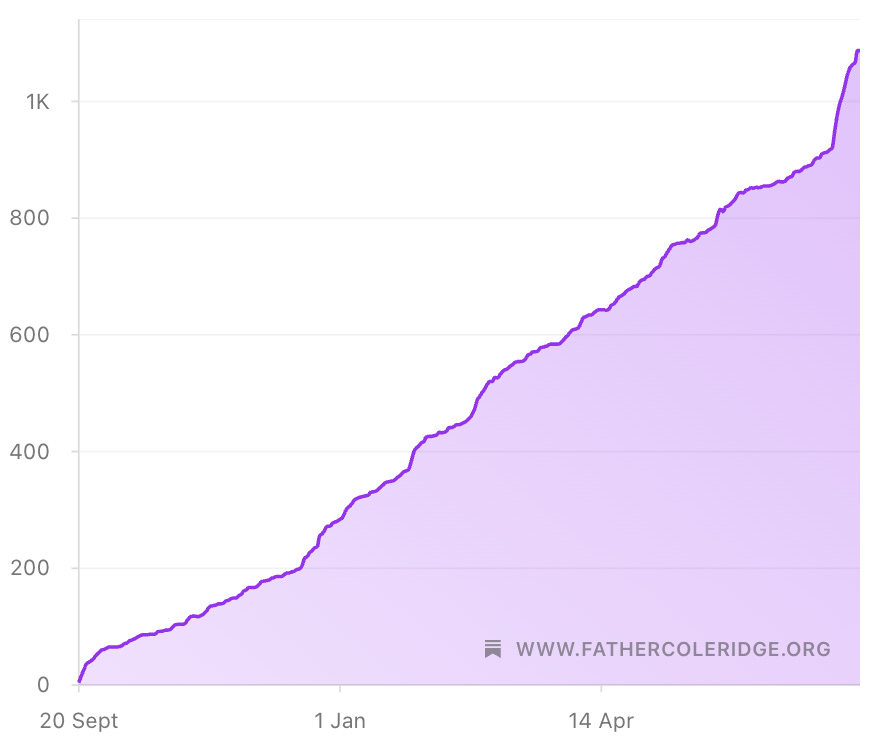
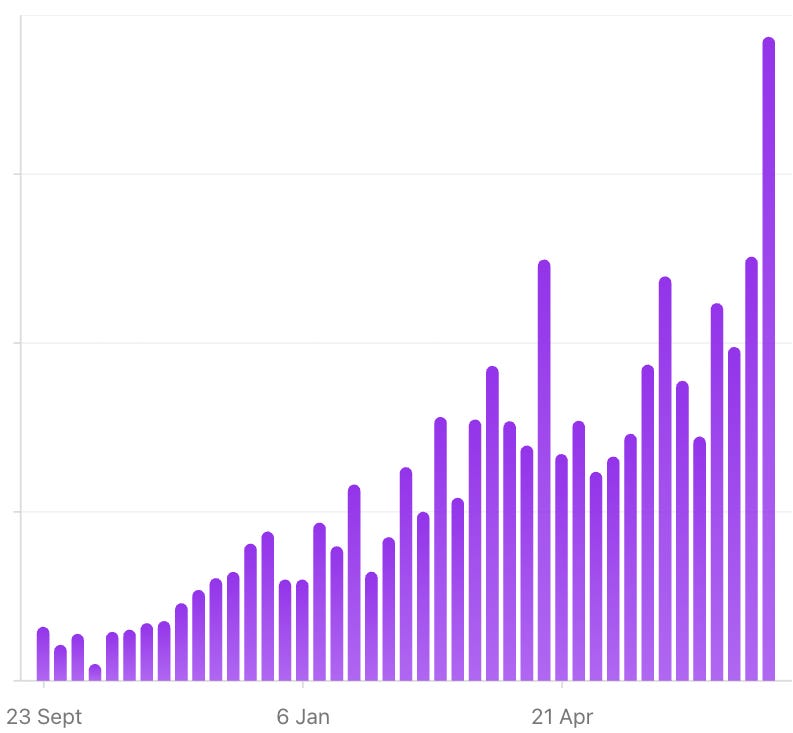
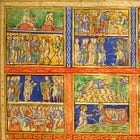



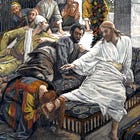
Laudetur Iesus Christus, wmreview folks.
I just did the monthly paid subscription, since you asked nicely. I truly believe you are doing God's work and the will of our Mother, Virgin Most Merciful.
So though I don't have time to read many of them and am poor as a sedevacantist church rat (poorest of all church rats) I wanted to give some support. Also it was through your writings in lifesitenews I saw the truth about Prevost & company, so it's also a thank-you for those.
I think BigPulpit.com had a little contribution to the growth of the Father Coleridge Reader! ;)